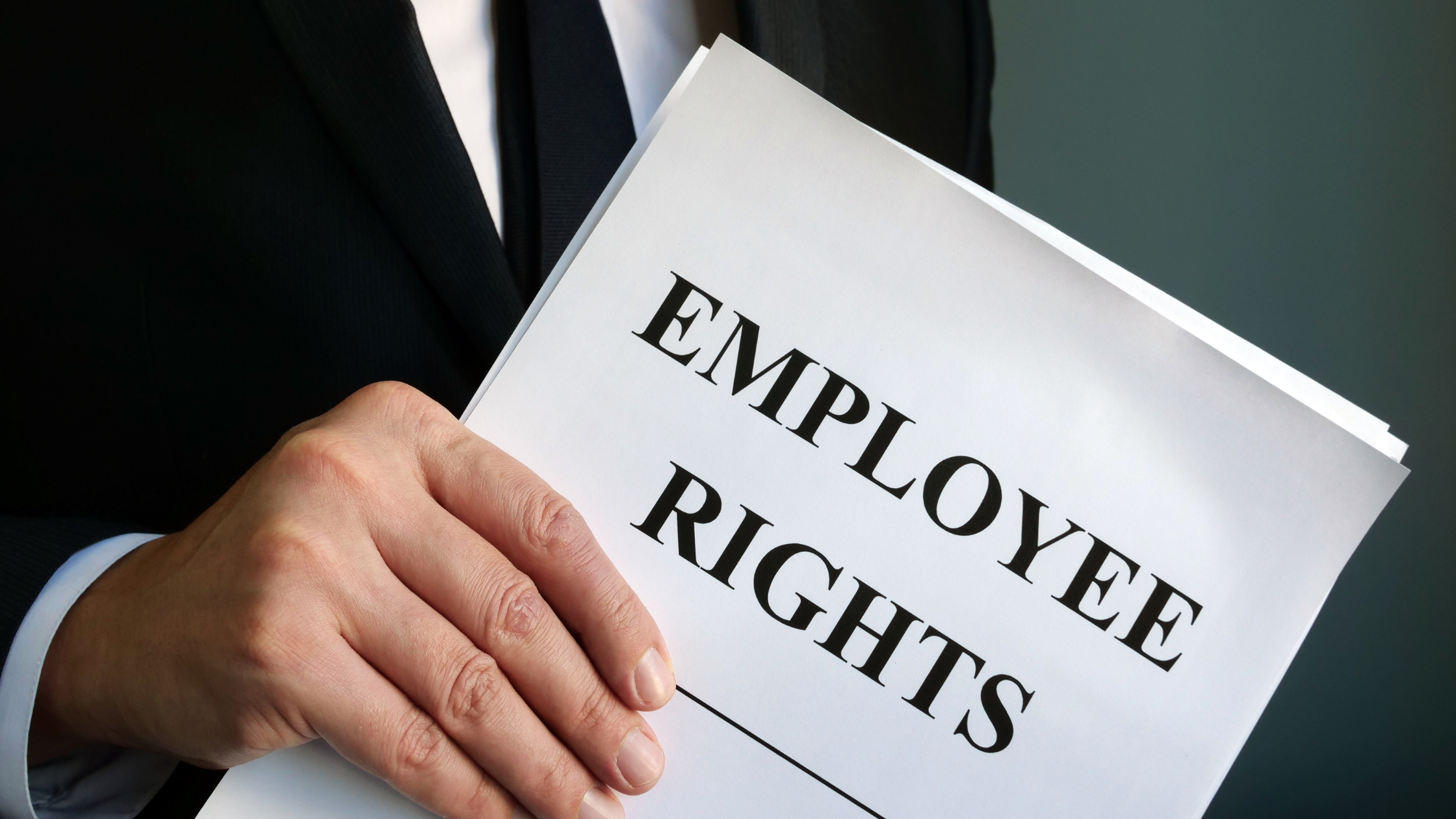Employee resource groups (ERGs) are becoming increasingly popular in companies around the world. These groups are formed by employees who share common interests or characteristics, such as race, gender, or sexual orientation. ERGs provide a platform for employees to come together, share experiences, and work towards a common goal. They also play a crucial role in promoting diversity and inclusion in the workplace.
ERGs have numerous benefits for both employees and companies. They provide a sense of community and belonging, which can improve employee morale and job satisfaction. ERGs also help to foster a more inclusive workplace culture by promoting awareness and understanding of different perspectives and experiences. This can lead to increased creativity, innovation, and productivity.
According to a study by McKinsey, today, 90 percent of Fortune 500 companies have Employee Resource Groups (ERGs). These voluntary, employee-led groups are formed around a particular dimension of diversity, such as race, ethnicity, gender, sexual orientation, disability, or veteran status.
Research has shown that companies with diverse and inclusive workforces are more successful than those without. By supporting ERGs and promoting diversity and inclusion, companies can attract and retain top talent, improve their reputation, and increase their bottom line. ERGs are a valuable tool for achieving these goals, and companies that invest in them are likely to reap the benefits in the long run. According to Deloitte, inclusive teams outperform their peers by 80 percent in team-based assessments.
ERGs can have a significant impact on the productivity, profitability, and culture of an organisation. A study by the Harvard Business Review shows that companies with diverse and inclusive workforces are 45 percent more likely to report growth in market share over the previous year and 70 percent more likely to report that the firm captured a new market.
ERGs can also improve employee engagement and retention by providing a sense of community and belonging for employees. A study conducted by the Society for Human Resource Management showed that 78 percent of employees who participated in an ERG reported feeling more engaged in their work. 71% of companies with ERGs report increased employee engagement, and 59% report increased retention of diverse talent. (source: SHRM)
According to a report by Forbes, LinkedIn has 10 ERGs, 20 global co-chairs, and more than 5,000 members and allies. Teuila Hanson, chief people officer at LinkedIn, says, “historically, these employees take on leadership roles and the associated work in addition to their day jobs, and it’s important to recognise and reward them for their contributions.” This recognition includes paying ERG leaders, which is a significant step in the battle against burnout.
ERGs can also have a positive impact on the bottom line. A study by Catalyst found that companies with more women on their boards of directors outperformed those with fewer women by 26% in terms of return on invested capital.
However, ERGs can face challenges when it comes to funding and resources. According to a study by Mercer, only 38% of companies provide funding for ERGs, and just 27% provide dedicated staff resources. Additionally, ERGs can sometimes struggle with leadership and sustainability.
Now we’ve looked at the stats, lets look at what Employee Resource Groups really are…
What are Employee Resource Groups?
Employee Resource Groups are voluntary, employee-led groups that serve as a resource for individuals who share common characteristics or experiences. ERGs are formed around a particular dimension of diversity, such as race, ethnicity, gender, sexual orientation, disability, or veteran status. These groups provide a supportive community for members to connect, share experiences, and learn from one another.
Employee Resource Groups are a crucial component of a company’s diversity and inclusion strategy. They help to create a sense of community within an organisation and foster a more inclusive workplace culture. ERGs provide a space for members to share their perspectives and experiences, which can help to build empathy and understanding across different groups. Employee Resource Groups also serve as a resource for the company, providing valuable insights and feedback on diversity and inclusion initiatives.
ERGs typically have a charter that outlines their purpose, goals, and membership criteria. ERG leaders are responsible for managing the group, organising events and activities, and communicating with members. Employee Resource Groups may also have an executive sponsor, who is a senior leader in the company that provides support and guidance to the group.
Membership in Employee Resource Groups is voluntary and open to all employees who share the group’s characteristics or interests. ERGs provide a range of resources and benefits to their members, including:
- Networking opportunities
- Mentorship and professional development
- Community outreach and volunteer opportunities
- Advocacy and support for diversity and inclusion initiatives
ERGs are an essential tool for companies looking to create a more diverse and inclusive workplace. By providing a supportive community for employees and serving as a resource for the company, Employee Resource Groups help to strengthen acceptance, camaraderie, and fairness across groups and help members build allyship.
To find out more information about how to create a more diverse and inclusive workplace, click here.
Why Employee Resource Groups are Important
Employee Resource Groups are an essential tool for promoting diversity, inclusion, and equity in the workplace. They are voluntary, employee-led groups that aim to support and advance underrepresented groups in the workplace. ERGs provide a sense of belonging and community for workers who may feel isolated or marginalised. They also help to foster employee engagement and retention by providing opportunities for social connections and personal development.
ERGs can be an effective way for business leaders to communicate their commitment to diversity and inclusion, and to demonstrate their support for workers from diverse backgrounds. By providing a platform for workers to share their experiences and perspectives, Employee Resource Groups can help to create a more inclusive and equitable workplace culture. ERGs can also help to identify and address issues of discrimination, bias, and inequality in the workplace.
Employee Resource Groups can be especially beneficial for workers who may face unique challenges related to their identity or background, such as veterans, workers with disabilities, or those who identify as LGBTQ+. ERGs can provide a safe and supportive space for these workers to connect with others who share similar experiences, and to advocate for their needs and interests within the workplace.
ERGs can also play a crucial role in advancing the careers of underrepresented workers. By providing networking opportunities, mentorship, and professional development resources, Employee Resource Groups can help workers to build the skills and connections they need to advance within their organisations. This can help to address issues of representation and equity at all levels of the organisation.
Overall, Employee Resource Groups are an important tool for promoting diversity, inclusion, and equity in the workplace. By providing organisational support for these groups, employers can help to create a workplace culture that values and supports workers from diverse backgrounds, and that fosters a sense of belonging and community for all employees.
The Benefits of Employee Resource Groups
Employee Resource Groups are an essential component of diversity and inclusion initiatives in many organisations. ERGs are voluntary, employee-led groups that come together based on shared characteristics, experiences, or goals to promote a sense of community and belonging among employees.
Diversity and Inclusion
ERGs promote diversity and inclusion in the workplace by providing a platform for employees to connect and build relationships with colleagues who share similar backgrounds, experiences, or interests. ERGs help to foster a culture of acceptance and respect for differences, which can lead to a more inclusive and equitable workplace.
Professional Development and Career Advancement
ERGs provide opportunities for professional development and career advancement for their members. Employee Resource Groups offer training, mentoring, and workshops that help members build skills and knowledge that can be applied to their jobs. ERGs can also provide members with exposure to senior leaders and decision-makers in the organisation, which can lead to career advancement opportunities.
Engagement and Retention
ERGs can improve employee engagement and retention by providing a sense of community and belonging for employees. Employee Resource Groups offer opportunities for employees to connect with colleagues outside of their immediate work teams, which can help to build relationships and foster a sense of loyalty to the organisation.
Organisational Support
ERGs can provide valuable support to the organisation by helping to promote diversity and inclusion initiatives. Employee Resource Groups can provide input and feedback on policies and practices that impact employees, which can help to ensure that the organisation is meeting the needs of all employees. ERGs can also help to promote the organisation’s brand and reputation by participating in marketing and community outreach activities.
Social Impact
ERGs can have a positive social impact by promoting equality and social justice in the workplace and in the broader community. For example, the National Black Employees Association (NBEA) was formed in response to the lack of representation of Black employees in Fortune 500 companies. The NBEA has been instrumental in advocating for greater representation and opportunities for Black employees in the workplace.
Overall, ERGs can have a significant impact on the productivity, profitability, and culture of an organisation. By providing a platform for employees to connect and build relationships with colleagues who share similar backgrounds, experiences, or interests, ERGs can help to promote a more inclusive and equitable workplace.
Challenges of Employee Resource Groups
Pain Points
While Employee Resource Groups can have significant benefits for diversity and inclusion, there are also some challenges that come with managing these groups. One of the pain points is that ERGs can sometimes be seen as exclusive, rather than inclusive. This can happen when ERGs are formed around specific identities, such as race, gender, or sexual orientation. While it’s important to create spaces where people with shared experiences can connect, it’s also important to ensure that these groups don’t exclude people who don’t share those identities.
Another challenge is that ERGs can sometimes become siloed within the organisation, rather than being integrated into the broader culture. This can happen when ERGs are seen as separate from the rest of the organisation, rather than being seen as a part of the overall effort to create a more diverse and inclusive workplace. When ERGs are siloed, they may not have as much impact as they could, and they may not be able to work as effectively with other parts of the organisation.
ERGs can also face challenges when it comes to funding and resources. While some organisations provide significant support for ERGs, others may not provide enough funding or resources to help these groups thrive. This can make it difficult for ERGs to organise events or initiatives, and it can limit the impact that these groups can have on the organisation as a whole.
Finally, ERGs can face challenges when it comes to leadership and sustainability. ERGs need strong leadership in order to be effective, but it can be difficult to find people who are willing to take on these roles. Additionally, ERGs can sometimes struggle to maintain momentum over time, particularly if key leaders leave the organisation or if there isn’t enough support from the broader culture.
Does Your Business Have Employee Resource Groups?
Employee Resource Groups (ERGs) are an effective way to promote diversity and inclusion in the workplace. They provide a platform for employees to connect, share experiences, and support each other. ERGs can help to create a sense of community and belonging, which can lead to increased employee engagement and retention.
ERGs also have a positive impact on business outcomes. They can help to attract and retain diverse talent, improve innovation and decision-making, and enhance the company’s reputation as an inclusive employer.
However, to be effective, ERGs must be supported by senior leadership and have a clear purpose and goals. They must be inclusive and open to all employees, regardless of their background or identity. ERGs should also be given the resources and support they need to achieve their objectives.
Overall, ERGs are a valuable tool for promoting diversity and inclusion in the workplace. By creating a sense of community and providing support for underrepresented groups, ERGs can help to foster a more inclusive and welcoming workplace culture. If your organisation does not already have ERGs, consider starting one or supporting the creation of one. By doing so, you can help to create a more diverse and inclusive workplace for everyone.
If you’ve enjoyed this article, let us know at info@rekkruut.com, or let us know on our LinkedIn or Facebook Pages!
Don’t forget to subscribe to our RekkTalk Newsletter, and visit our RekkBlog!



